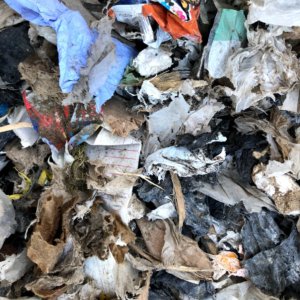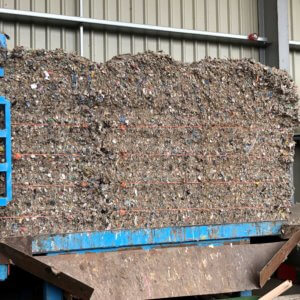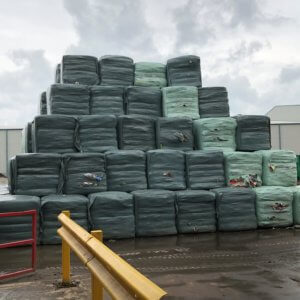What is the difference between RDF and SRF?
As the world looks to ease its reliance on fossil fuels, RDF (Refuse Derived Fuel) and SRF (Solid Recovered Fuel) are increasingly being utilised for power generation as more sustainable energy sources.
RDF and SRF can play an important part in diverting waste from landfill, by turning general waste into a fuel that can be used in industrial processes and at Energy from Waste plants to generate heat and power.
But what are RDF and SRF made from and what are the key differences between the two materials?
WHAT IS RDF?
Refuse Derived Fuel, or ‘RDF’, is created from Municipal Solid Waste (MSW), which is made up of non-hazardous, residential, industrial, commercial, construction and demolition waste.
MSW arrives at a Materials Recovery Facility (MRF) and is then screened for recyclable materials which are then removed. Then, the leftover materials are shredded and treated before being compressed into RDF, which is then baled and sent to Energy from Waste plants (EfWs) to be incinerated and generate electricity.
RDF fuel is renewable, easy to transport and easy to store. It has a high calorific value, stable combustion, low secondary pollution and low dioxin emissions.
WHAT IS SRF?
SRF is considered to be a more refined fuel with a low moisture content and an energy content around two-thirds that of coal. Not only can SRF be used in EfWs as an alternative to fossil fuels but it can also be used in cement kilns and other industrial processes.
Similarly, Solid Recovered Fuel (SRF) is produced from non-hazardous waste sources for use in incineration plants or co-incineration facilities for energy recovery and reuse.
Again, the combustible components obtained from MSW are treated which could include drying, screening and shredding down to leave fibres and fragments of paper, plastics, wood and textiles that have high calorific value, low moisture and low chlorine content.
WHAT IS THE DIFFERENCE BETWEEN RDF AND SRF?
Whilst these two fuels originate from the same source materials, they differ in the level of refinement required. SRF is typically a highly refined type of fuel that has usually been produced to the exact specifications requested by the companies who will use the fuel, whereas RDF materials require less refinement to meet the end-users specifications.
Increasingly, the line between what has historically been considered RDF and SRF is becoming blurred, as new treatment technologies come on stream that require a fuel with properties that fall in the middle of what has previously been designated RDF and SRF.
Looking for more information on SRF and RDF?
We have more information on SRF and RDF on our dedicated waste and recycling page, but if you’d like to speak to an expert on your alternative fuels, visit our contact page. Alternatively, you can see how our experts helped Tom White to design one of the most sophisticated MRFs of its kind in our latest case study.


